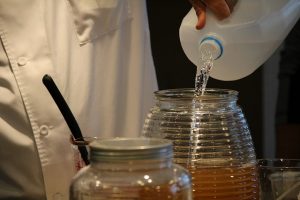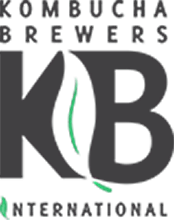Brazil
 Portuguese -English (See Below)
Portuguese -English (See Below)
DIÁRIO OFICIAL DA UNIÃO
Publicado em: 18/09/2019 | Edição: 181 | Seção: 1 | Página: 13
Órgão: Ministério da Agricultura, Pecuária e Abastecimento/Gabinete da Ministra
INSTRUÇÃO NORMATIVA Nº 41, DE 17 DE SETEMBRO DE 2019
O MINISTRO DE ESTADO DA AGRICULTURA, PECUÁRIA E ABASTECIMENTO SUBSTITUTO, no uso da atribuição que lhe confere o art. 87, parágrafo único, inciso II, da Constituição, com base no art. 1º, inciso III, do Decreto nº 8.851, de 20 de setembro de 2016, tendo em vista o disposto na Lei nº 8.918, de 14 de julho de 1994, no Decreto nº 6.871, de 4 de junho de 2009, e o que consta do Processo nº 21000.052620/2017-51, resolve:
Art. 1º Estabelecer o Padrão de Identidade e Qualidade da Kombucha em todo o território nacional, na forma desta Instrução Normativa e do seu Anexo.
Art. 2º Para efeito desta Instrução Normativa considera-se:
I – fruta: a designação genérica do fruto comestível, incluído o pseudofruto e a infrutescência, apresentado na forma in natura, suco, polpa ou água de coco, e destinado à produção de bebida;
II – vegetal: a planta e suas partes, exceto a fruta, apresentadas na forma in natura ou suco de vegetal, e destinadas à produção de bebida; e
III – extrato aquoso: extrato obtido de espécies vegetais e suas partes, previstas em legislação específica da ANVISA, e obtidas por métodos físicos, utilizando água como único agente extrator
Art. 3º Esta Instrução Normativa entra em vigor na data de sua publicação, sendo fixado o prazo de trezentos e sessenta e cinco dias para serem efetuadas as devidas adequações às regras estabelecidas quanto ao registro e a rotulagem.
Parágrafo único. O produto fabricado na vigência do prazo estipulado no caput poderá ser comercializado até a data de sua validade.
MARCOS MONTES CORDEIRO
ANEXO
1 – Definições
1.1 A kombucha deve atender aos parâmetros descritos nesta Instrução Normativa e seu Anexo.
1.1.1 As normas estabelecidas nesta Instrução Normativa aplicam-se somente à kombucha submetida a processos industriais tecnologicamente adequados e destinada ao consumo humano como bebida.
1.2 Kombucha é a bebida fermentada obtida através da respiração aeróbia e fermentação anaeróbia do mosto obtido pela infusão ou extrato de Camellia sinensis e açúcares por cultura simbiótica de bactérias e leveduras microbiologicamente ativas (SCOBY).
2 – Classificação/denominação
2.1 KOMBUCHA DE (nome da(s) espécie(s) vegetal(is), se houver, utilizada antes da fermentação associada a Camellia sinensis) COM (nome do(s) ingrediente(s) opcional(is), se houver, listados nos itens de 5.2.2 a 5.2.5) COM AROMA DE (nome do aditivo aromatizante natural) GASEIFICADA (se adicionada de gás carbônico), COM ÁLCOOL/ALCOÓLICA (se contiver álcool acima de 0,5% v/v), obrigatoriamente nesta ordem.
2.2 A kombucha não alcoólica elaborada somente com os ingredientes obrigatórios, ou seja, isenta de quaisquer ingredientes opcionais, poderá ser designada KOMBUCHA ORIGINAL.
3 – Rotulagem
3.1 É obrigatória a declaração da graduação alcoólica na kombucha com álcool, no painel principal do rótulo, expresso em porcentagem em volume (% v/v), em complementação à expressão “Teor alcoólico:” nas mesmas dimensões da denominação.
3.2 O painel principal do rótulo da kombucha sem álcool, cujo teor alcoólico seja superior a 0,05% v/v, deve informar, nas mesmas dimensões da denominação, sobre a presença de álcool nas seguintes formas:
3.2.1 Utilizar a frase de advertência: “Pode conter álcool em até 0,5% v/v”.
3.2.2 Declarar seu teor alcoólico máximo no seguinte formato: “Teor alcoólico: (% v/v)”, admitindo tolerância de 0,1% v/v.
3.3 Na rotulagem da kombucha sem álcool somente poderá ser utilizada a expressão “zero álcool”, “zero % álcool”, “0,0%”, ou similares, no produto que contiver até 0,05% v/v de álcool.
3.4 É vedado o uso de alegações funcionais e de saúde não autorizadas pela legislação específica da ANVISA.
3.5 A kombucha submetida ao processo de pasteurização deve ter em sua rotulagem a expressão “pasteurizada”, no painel principal com o dobro das dimensões da denominação.
3.6 É proibida a utilização na rotulagem de expressões relativas à classificação do vinho tais como seco, suave, branco, tinto, reserva entre outras, bem como a palavra vinho de forma isolada ou como parte de outros dizeres.
3.7 No rótulo da kombucha fica proibido o uso de expressões tais como: artesanal, caseira, familiar, bebida viva, bebida probiótica, bebida milenar, elixir, elixir da vida, energizante, revigorante, especial, premium, dentre outras que atribuam características de qualidades superlativas e propriedades funcionais não aprovadas em legislação específica.
4 – Parâmetros analíticos
| Parâmetro | Mínimo | Máximo |
| pH | 2,5 | 4,2 |
| Graduação alcoólica (% v/v) kombucha sem álcool | – | 0,5 |
| Graduação alcoólica (% v/v) kombucha com álcool | 0,6 | 8,0 |
| Acidez volátil (mEq/L) | 30 | 130 |
| Pressão (atm a 20°C) na kombucha adicionada de CO2 | 1,1 | 3,9 |
5 – Composição
5.1 Ingredientes obrigatórios:5.1.1 Água potável, conforme estabelecido em legislação específica do Ministério da Saúde, de acordo com a Portaria nº 2.914, de 12 de dezembro de 2011.
5.1.2 Infusão ou extrato aquoso de Camellia sinensis.
5.1.3 Açúcares, conforme legislação específica da ANVISA, Resolução RDC nº 271, de 22 de setembro de 2005.
5.1.4 Cultura simbiótica de bactérias e leveduras (SCOBY) adequadas para fermentação alcoólica e acética, desde que garantida a sua inocuidade à saúde humana.
5.1.4.1 Os microorganismos presente no SCOBY podem estar presentes na bebida final, sendo vedada a adição dos mesmos após o processo de respiração e fermentação.
5.1.5 É autorizado o uso de processos tecnológicos adequados para a produção da kombucha, como pasteurização, filtração, ultracentrifugação, entre outros.
5.2 Ingredientes opcionais:
5.2.1 Infusão de espécies vegetais em água, ou seus extratos, autorizadas em legislação específica da ANVISA, Resoluções RDC nº 267, de 22 de setembro de 2005 e nº 219, de 22 de dezembro de 2006.
5.2.2 Fruta.
5.2.3 Vegetal.
5.2.4 Especiarias, previstos em legislação específica da ANVISA, Resolução RDC nº 276, de 22 de setembro de 2005.
5.2.5 Mel.
5.2.6 Melado e outros açúcares de origem vegetal.
5.2.7 Gás carbônico (CO2) industrialmente puro.
5.2.8 Fibras, vitaminas, sais minerais e outros nutrientes, previstos em legislação específica da ANVISA, Resolução RDC nº 54, de 12 de novembro de 2012, na kombucha não alcoólica.
5.2.9 Novos ingredientes, aprovados pela ANVISA.
5.2.10 Aditivos aromatizantes naturais e corantes naturais autorizados em legislação específica da ANVISA, Resolução RDC nº 02, de 15 de janeiro de 2007 e RDC nº 05, 4 de fevereiro de 2007, na kombucha não alcoólica.
5.3. É permitido o uso de coadjuvantes de tecnologia, autorizados em legislação específica da ANVISA, Resolução RDC Nº 286, de 28 de setembro de 2005.
6 – Proibições
6.1 Presença de contaminantes microbiológicos em concentração superior ao limite estabelecido pela Resolução RDC nº 12, de 2 de janeiro de 2001.
6.2 Presença de resíduo de agrotóxico não autorizado ou em concentração superior ao autorizado para fruta ou vegetal empregado como matéria-prima na produção da kombucha calculado em função da proporção de fruta ou vegetal utilizado.
6.3 Presença de qualquer contaminante orgânico ou inorgânico em concentração superior aos limites estabelecidos pela Resolução RDC nº 42, de 29 de agosto de 2013.
6.4 Presença de qualquer substância em quantidade que possa se tornar nociva para a saúde humana, observados os limites de legislação específica.
6.5 Adição de qualquer ingrediente não permitido em legislação específica da ANVISA ou que possa ser utilizado para adulteração do produto.
6.5.1 Adição de ácidos voláteis, sintéticos ou de fontes exógenas, que não sejam provenientes exclusivamente do processo fermentativo dos insumos.
6.6 Utilização de recipientes e embalagens tipo conta-gotas, spray, ampolas, ou outros que caracterizem como produtos similares àqueles de uso farmacêutico, medicamentoso ou terapêutico.
Este conteúdo não substitui o publicado na versão certificada.

English
OFFICIAL JOURNAL OF THE UNION
Organization: Ministry of Agriculture, Livestock and Supply / Cabinet of the Minister
NORMATIVE INSTRUCTION No 41, SEPTEMBER 17, 2019
THE MINISTER OF STATE FOR AGRICULTURE, LIVESTOCK AND SUBSTITUTE SUPPLY, in accordance with the powers conferred upon him by art. 87, sole paragraph, item II, of the Constitution, based on art. 1, item III, of Decree No. 8,851, of September 20, 2016, in view of the provisions of Law No. 8,918, of July 14, 1994, Decree No. 6,871, of June 4, 2009, and what is contained in 21000.052620 / 2017-51, resolves:
Article 1 Establish the Kombucha Identity and Quality Standard throughout the national territory, pursuant to this Normative Instruction and its Annex.
Art. 2 For the purposes of this Normative Instruction:
I – fruit: the generic name of the edible fruit, including pseudofruit and fruitlessness, presented in fresh form, juice, pulp or coconut water, and intended for the production of beverages. ;
II – vegetable: the plant and its parts, except fruit, presented in fresh or vegetable juice form and intended for the production of beverages; and
III – Aqueous extract: extract obtained from plant species and parts thereof, provided in legislationfispeciANVISAand obtained by physical methods using water a sole extracting agent.
Art. 3 This Normative Instruction shall enter into force on the date of its publication, and fixed the period of three hundred sixty-five days to be made the necessary adjustments to the established rules on the registration and labeling.
Single paragraph. The product manufactured within the term stipulated in the caput may be marketed until its expiration date.
MARCOS MONTES CORDEIRO
ANNEX
1 – Definitions
1.1 kombucha must meet the parameters described in this Normative Instruction and its annex.
1.1.1 The rules set forth in this Normative Instruction apply only to kombucha subjected to technologically appropriate industrial processes and intended for human consumption as a beverage.
1.2 Kombucha is fermented beverage obtained through aerobic respiration and anaerobic fermentation of mash obtained by infusing or extracting Camellia sinensis and sugars by symbiotic culture of microbiologically active bacteria and yeast (SCOBY).
2 – Classification / denomination
2.1 KOMBUCHA DE (name of plant species (s), if any) used before fermentation associated with Camellia sinensis) COM (name of optional ingredient (s) ( is), if any, listed in items 5.2.2 to 5.2.5) WITH GAS FLATED (name of natural flavoring additive) (if added by gas 17 = 35 carbonic), WITH ALCOHOL / ALCOHOLIC (if it contains alcohol above 0.5% v / v), necessarily in this order .
2.2 Non-alcoholic kombucha made with only the required ingredients, ie free of any optional ingredients, may be referred to as ORIGINAL KOMBUCHA.
3 – Labeling
3.1 It is compulsory to declare alcoholic strength in kombucha with alcohol on the main panel of the label, expressed as a percentage by volume (% v / v), in addition to the expression “Alcohol content:” in the same dimensions as the name.
3.2 The main panel of the alcohol-free kombucha label, with an alcohol content of more than 0.05% v / v, shall inform, in the same dimensions of the name, of the presence of alcohol in the following ways:
3.2.1 Use the phrase warning: “May contain alcohol up to 0.5% v / v”.
3.2.2 Declare its maximum alcohol content in the following format: “Alcohol content: (% v / v)”, assuming a tolerance of 0.1% v / v.
3.3 In the labeling of alcohol-free kombucha, only the expression “zero alcohol”, “zero% alcohol”, “0.0%” or similar may be used in the product containing up to 0.05% v / v alcohol.
3.4 the use of functional and health claims not authorized by law specifically ANVISAprohibited.
3.5 The kombucha subjected to the pasteurization process shall have the label “pasteurized” on its main panel twice the size of the denomination.
3.6 The use in the labeling of expressions concerning the classification of the wine such as dry, smooth, white, red, reserve among others, as well as the word wine alone or as part of other sayings.
3.7 The label of kombucha fic forbidden the use of expressions such as: handmade, home, family, living drink probiotic drink, ancient drink, elixir, elixir of life, energizing, invigorating, special, premium, among others attributing characteristics superlative qualities and functional properties not approved in legislation specifically.
4 – Analytical
| Parameter | Minimum | Maximum |
| pH | 2,5 | 4,2 |
| Alcohol content (% v / v) alcohol-free kombucha | – | 0,5 |
| Alcohol content (% v / v) alcohol kombucha | 0,6 | 8,0 |
| Volatile acidity (mEq) / L) | 30 | 130 |
| Pressure (atm at 20 ° C) in kombucha added | 1,1 | 3,9 |
5 -Composition
5.1ingredients required:
5.1.1 drinking water as set forth in law specific of Ministry of Health, according to Ordinance No. 2,914 of December 12, 2011.
5.1.2 Camellia sinensis infusion or aqueous extract.
5.1.3 Sugars, as specific legislation ANVISA RDC Resolution No. 271 of 22 September 2005.
5.1.4 Symbiotic culture of bacteria and yeast (SCOBY) suitable for alcoholic and acetic fermentation, provided that its harm to human health is guaranteed.
5.1.4.1 The microorganisms present in scoby may be present in the beverage final being sealed to adding the same after the process of respiration and fermentation.
5.1.5 It is permitted the use of appropriate technological processes for the production of kombucha, such as pasteurization, filtração, ultracentrifugation, among others.
5.2 Optional ingredients
5.2.1 Infusion of plant species in water, or their extracts, authorized specilegislationfiesANVISA, RDC Resolutions 267 of 22 September 2005 and 219 of 22 December 2006.
5.2 .2 Fruit.
5.2.3 Vegetable.
5.2.4 Spices, provided by specilegislationficANVISA RDC Resolution No. 276 of 22 September 2005.
5.2.5 Mel.
5.2.6 Molasses and other sugars of plant origin.
5.2.7 Industrially pure carbon dioxide (CO2).
5.2.8 fibers, vitamins, minerals and other nutrients provided by specilegislationficANVISA RDC Resolution No. 54 of November 12, 2012, in kombucha nonalcoholic.
5.2.9 New ingredients approved by ANVISA.
5.2.10 natural flavoring additives and natural colors authorized in specilegislationfiesANVISA RDC Resolution No. 02 of January 15, 2007 and DRC on 05, February 4, 2007, in kombucha nonalcoholic.
5.3. It is allowed the use of processing aids authorized in specific legislation ANVISA RDC Resolution No. 286 of 28 September 2005.
6 – Prohibitions
6.1 Presence of microbiological contaminants in concentrations above the limit established by RDC Resolution No. 12, of January 2, 2001.
6.2 Presence of pesticide residue not authorized or in a higher concentration than authorized for fruit or vegetable used as raw material in the production of kombucha calculated according to the proportion of fruit or vegetable used.
6.3 Presence of any organic or inorganic contaminant in a concentration greater than the limits established by RDC Resolution 42 of 29 August 2013.
6.4 Presence of any substance in quantity that may be harmful to human health, within the limits of specific legislation.fica.
6.5 Addition of any ingredient not permitted inlegislationspecifiestheANVISA or can be used for product tampering.
6.5.1 Addition of volatile acids, synthetic or exogenous sources, other than those derived exclusively from the fermentation process of the inputs.
18/09/19 REGULATORY INSTRUCTION No 41, SEPTEMBER 17, 2019 – INSTRUMENT … No 41, SEPTEMBER 17, 2019 – DOU – National Press
17 = 35 6.6 Use of Containers and Containers drops, spray, ampoules, or others which characterize as products similar to those of pharmaceutical, pharmaceutical or therapeutic use.
This content does not replace the version published in the certified.

